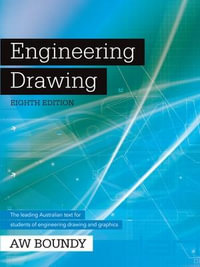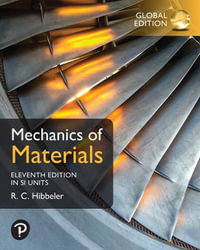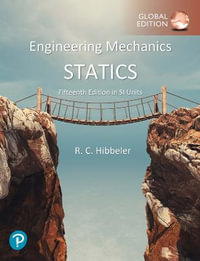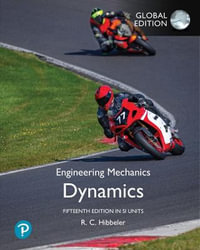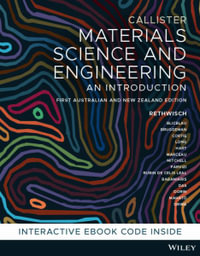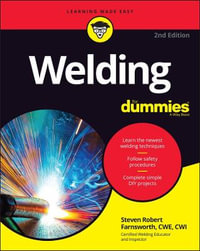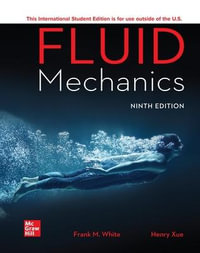Preface xi
Series Preface xiii
Notation xv
About the Code xxi
PART I BASIC CONCEPTS AND SOLUTION TECHNIQUES
1 Preliminaries 3
1.1 A Simple Example of Non-linear Behaviour 3
1.2 A Review of Concepts from Linear Algebra 5
1.3 Vectors and Tensors 12
1.4 Stress and Strain Tensors 17
1.5 Elasticity 23
1.6 The PyFEM Finite Element Library 25
References 29
2 Non-linear Finite Element Analysis 31
2.1 Equilibrium and Virtual Work 31
2.2 Spatial Discretisation by Finite Elements 33
2.3 PyFEM: Shape Function Utilities 38
2.4 Incremental-iterative Analysis 41
2.5 Load versus Displacement Control 50
2.6 PyFEM: A Linear Finite Element Code with Displacement
Control 53
References 62
3 Geometrically Non-linear Analysis 63
3.1 Truss Elements 64
3.2 PyFEM: The Shallow Truss Problem 76
3.3 Stress and Deformation Measures in Continua 85
3.4 Geometrically Non-linear Formulation of Continuum Elements
91
3.5 Linear Buckling Analysis 100
3.6 PyFEM: A Geometrically Non-linear Continuum Element 103
References 110
4 Solution Techniques in Quasi-static Analysis 113
4.1 Line Searches 113
4.2 Path-following or Arc-length Methods 116
4.3 PyFEM: Implementation of Riks? Arc-length Solver
124
4.4 Stability and Uniqueness in Discretised Systems 129
4.5 Load Stepping and Convergence Criteria 134
4.6 Quasi-Newton Methods 138
References 141
5 Solution Techniques for Non-linear Dynamics 143
5.1 The Semi-discrete Equations 143
5.2 Explicit Time Integration 144
5.3 PyFEM: Implementation of an Explicit Solver 149
5.4 Implicit Time Integration 152
5.5 Stability and Accuracy in the Presence of Non-linearities
156
5.6 Energy-conserving Algorithms 161
5.7 Time Step Size Control and Element Technology 164
References 165
PART II MATERIAL NON-LINEARITIES
6 Damage Mechanics 169
6.1 The Concept of Damage 169
6.2 Isotropic Elasticity-based Damage 171
6.3 PyFEM: A Plane-strain Damage Model 175
6.4 Stability, Ellipticity and Mesh Sensitivity 179
6.5 Cohesive-zone Models 185
6.6 Element Technology: Embedded Discontinuities 190
6.7 Complex Damage Models 198
6.8 Crack Models for Concrete and Other Quasi-brittle Materials
201
6.8.1 Elasticity-based Smeared Crack Models 201
6.8.2 Reinforcement and Tension Stiffening 206
6.9 Regularised Damage Models 210
References 215
7 Plasticity 219
7.1 A Simple Slip Model 219
7.2 Flow Theory of Plasticity 223
7.3 Integration of the Stress?strain Relation 239
7.4 Tangent Stiffness Operators 249
7.5 Multi-surface Plasticity 252
7.6 Soil Plasticity: Cam-clay Model 267
7.7 Coupled Damage?Plasticity Models 270
7.8 Element Technology: Volumetric Locking 271
References 277
8 Time-dependent Material Models 281
8.1 Linear Visco-elasticity 281
8.2 Creep Models 287
8.3 Visco-plasticity 289
References 303
PART III STRUCTURAL ELEMENTS
9 Beams and Arches 307
9.1 A Shallow Arch 307
9.2 PyFEM: A Kirchhoff Beam Element 317
9.3 Corotational Elements 321
9.4 A Two-dimensional Isoparametric Degenerate Continuum Beam
Element 328
9.5 A Three-dimensional Isoparametric Degenerate Continuum Beam
Element 333
References 341
10 Plates and Shells 343
10.1 Shallow-shell Formulations 344
10.2 An Isoparametric Degenerate Continuum Shell Element 351
10.3 Solid-like Shell Elements 356
10.4 Shell Plasticity: Ilyushin?s Criterion 357
References 361
PART IV LARGE STRAINS
11 Hyperelasticity 365
11.1 More Continuum Mechanics 365
11.2 Strain Energy Functions 374
11.3 Element Technology 389
References 398
12 Large-strain Elasto-plasticity 401
12.1 Eulerian Formulations 402
12.2 Multiplicative Elasto-plasticity 407
12.3 Multiplicative Elasto-plasticity versus Rate
Formulations 411
12.4 Integration of the Rate Equations 414
12.5 Exponential Return-mapping Algorithms 418
References 422
PART V ADVANCED DISCRETISATION CONCEPTS
13 Interfaces and Discontinuities 427
13.1 Interface Elements 428
13.2 Discontinuous Galerkin Methods 436
References 439
14 Meshless and Partition-of-unity Methods 441
14.1 Meshless Methods 442
14.2 Partition-of-unity Approaches 451
References 470
15 Isogeometric Finite Element Analysis 473
15.1 Basis Functions in Computer Aided Geometric Design 473
15.2 Isogeometric Finite Elements 483
15.3 PyFEM: Shape Functions for Isogeometric Analysis 487
15.4 Isogeometric Analysis in Non-linear Solid Mechanics 490
References 506
Index 509



